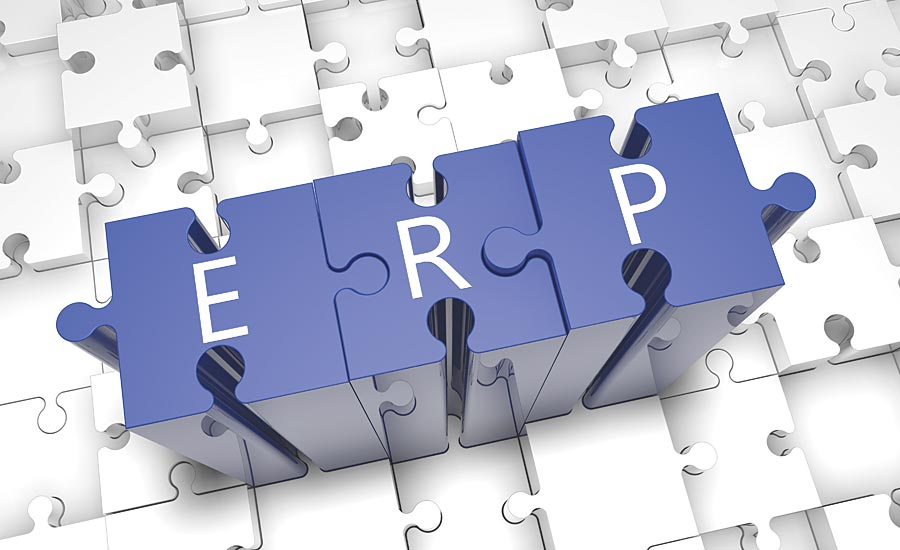Choosing an ERP has always been a complex task, but in the past it was even more so. I have been in the Information Technology Industry for more than 20 years and I can affirm that businessmen perceive ERP as a complex solution and difficult to implement, but they are aware of its functionality in a company and, possibly, its livelihood. Which makes me wonder:
- Is it convenient or not to implement and choose an ERP?
- What does your success depend on?
- How to return to the ERP the confidence that the directors and managers used to have in it?
In the following video we can see 7 ways to implement an ERP. This information can then be useful in the management system selection process .
The Management Planning System (ERP) was not always what it actually is today. It began being needed to more efficiently manage the key areas of a company (accounting, billing, sales, purchases and costs) from modules; but it was not possible to take full advantage of the functions, but only in a partial way, since these modules were not integrated.
With what has already happened, they continued to seek to facilitate communication between the business areas and for this, the developers managed to integrate their components. Although it is true that with this change came the growth of the ERP functionality, it also made it more robust, time consuming and expensive to implement. This, in turn, placed him exclusively in the crosshairs of large corporations.
According to a study carried out by the Harvard Business Review, companies that choose an ERP and acquire it have a reduction in losses and shrinkage of 10%; but those who chose it correctly, have a reduction of up to 35% on average. In this sense, decision makers being aware of this fact, it is natural that they should choose to choose an ERP and implement it in a more controlled and effective way that allows increasing their success rate. The first step to achieving a successful implementation is choosing an ERP wisely. It can be said that for a good choice five steps are required:
1. Involve your employees
If the need for an ERP has been agreed upon, the ideal is to involve the people who will be directly impacted by the decision, such as:
- end users.
- Systems personnel responsible for system administration.
- Managers and directors.
2. Define what you want to achieve through an ERP
What is the purpose of implementing and choosing an ERP like Business Central , D365 Finance, what can be facilitated, looking for the benefits that would come with it. Under this idea, the implementation scheme, priorities, business impact and probable benefits must be defined, as well as considering which areas will be impacted by the decision. From automation, the key business processes that will benefit will be:
- Sales.
- Shopping.
- Inventories.
- Finance and accounting.
- Payroll.
- Production.
3. Scalability
Choosing an ERP that can meet the current needs of the business and at the same time has the ability to evolve in the future along with the business, is vital. Therefore, before making a decision, it is extremely important to consider the scalability of the solution on two levels:
- Horizontal: with modules or functionalities to be implemented when the management model evolves.
- Vertical: that supports transactional growth if the business grows.
Let’s not lose sight of the fact that choosing an ERP means living with it for five to 10 years on a day-to-day basis in the organization, therefore it is advisable to choose a solution that is updatable and scalable.
4. Choose a business partner, not a brand
The selection of the business management software provider is the most important thing. You should choose someone who markets quality software with the necessary scalability and that has that degree of flexibility that changes in the business model require as it grows. You also have to consider:
- The quantity and quality of clients and implementations made.
- If the company makes frequent updates, then it speaks well of the provider as it means that it makes improvements to its products and is aware of its customers.
- Availability of trained resources both for implementation and for subsequent technical support.
- Local presence.
If you are interested in obtaining a recommendation on which ERP provider is suitable for your company, we recommend entering our Saturn recommender, where after a simple process, you will receive a personalized report with the results obtained.
5. Plan implementation times
Finally, it is important to keep in mind that every project takes time. Throughout all these years, I have detected that for an ERP to be implemented correctly and successfully, the following must be considered in planning:
- The use of internal resources, their availability, experience and knowledge, because the duration and success of the implementation project will depend on these.
- Adherence to the standard processes of the solution because the level of adaptations and/or developments that must be carried out depends on this.
- The quality of existing business data and processes.
- The culture of the company regarding technology and its adoption.
- The implementation time can vary from 2 months to 2 years depending on the factors mentioned above.
Key questions to choose ERP
One in ten ERP implementations fail. And in many cases, the cause is a poor choice of the ERP system to be implemented.
A poor choice of enterprise resource management solution can cause other serious damage to the company. The most common, according to the study by the consulting firm Panorama, are implementation delays (61%), cost overruns (53%) and inability to realize the advantages of an ERP (30%).
To avoid this type of risk, below you will find the basic questions that you should ask yourself when choosing the ERP that you will implement in your company.
Do you really need an ERP?
Before embarking on this adventure, reflect on the needs of your company to determine if business management software can solve them. The lack of control over the business, the difficulty in obtaining a global vision of the activity, the existence of information “silos” within the structure or the impossibility of accessing up-to-date information are some of the signs that you need an ERP.
What is your industry?
This question is essential to decide if it is better to choose a vertical ERP or a horizontal ERP. Currently, there are specialized business management systems in many sectors such as logistics, agencies, construction, etc. If you find one for your activity, it can be a guarantee that it will suit your needs well.
What is the size of your company?
The first ERPs were very complex and expensive systems that were only available to governments and large multinationals. Fortunately, today there are many management software for SMEs, but you should take into account the size of your organization to choose a solution that suits your needs. In the same way, you must anticipate the future and try to foresee what your business requirements will be in a few years and if the ERP you choose will continue to satisfy them.
How many employees will use the solution?
An ERP for 20 users, which can be managed with a small server or in the cloud, is not the same as a solution for 500 users, which requires a much more complex technological infrastructure. Although each user license has a cost, he thinks that the benefits of an ERP only materialize if it is used by everyone in the company. In addition, you must take into account if users are in the same offices, spread out in delegations or need to access from mobile devices.
What modules do you need?
In addition to the number of employees that will use it, it is convenient to determine which areas of the business will work with the ERP in order to choose the most appropriate business management system. Most ERPs include the most basic modules like finance, production, inventory, HR, sales, etc. But since the ideal is that all business management is done with the ERP, you should make sure that it includes other modules that you may need such as marketing, business analysis, project management, etc.
What budget do you have?
Being clear about the available budget will help you make important decisions, such as whether to choose an industrialized or custom ERP. It is not a minor issue, because an “industrialized” ERP is cheaper but less flexible, while a self-developed ERP offers customization, although at a higher cost.
How long do you have to implement the ERP?
Considering that only 34% of ERP implementations are completed on schedule, one should be cautious. In this sense, an industrialized ERP saves time compared to custom development. But in addition to the speed of the implementation, it is also convenient to assess the time and cost that it will take to expand the ERP in the future, when the needs of the business change.
What resources do you have to maintain it?
If you have a large Information Technology department, you can afford the luxury of choosing a customized or more complex ERP, even if it requires the periodic intervention of your employees to update and maintain it. If this is not the case, it is best to opt for an industrialized ERP that is well proven and can be hosted in the cloud… or you will end up paying a fortune in consulting and external maintenance!
Finally, since ERP software is a solution with a considerable cost, it is desirable that your company uses it for a long time to amortize it. Therefore, you must keep the main future trends of ERP in mind to ensure that the solution you choose will continue to be useful for years to come. Otherwise, you may find yourself with the unpleasant “surprise” that, once the long implementation process is over… your ERP is already obsolete!
See more post – Microsoft Power Automate: Everything you need to know


